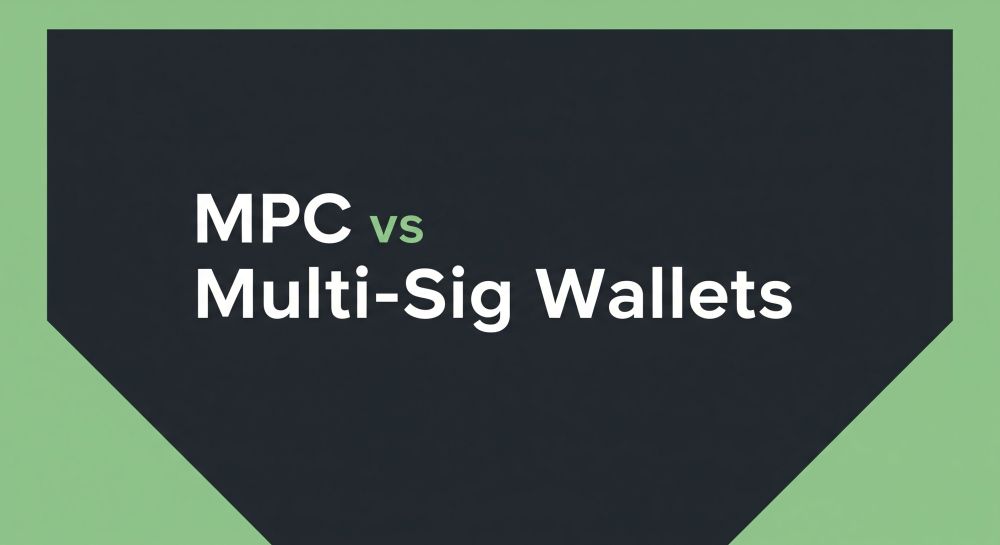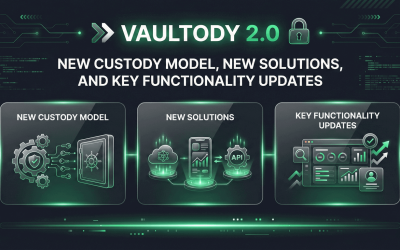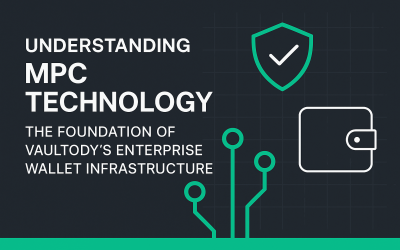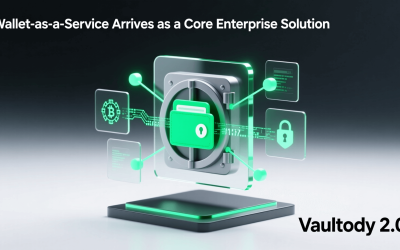MPC vs Multi‑Sig Wallets: A Complete, Up‑to‑Date Overview
Cryptocurrency security has never been more critical. With billions of dollars secured in blockchain wallets globally, the debate between MPC vs Multi‑sig wallets is intensifying. As threat actors scale tactics and regulatory scrutiny tightens, choosing the right architecture—MPC or Multi‑sig—can make or break institutional-grade custody solutions. This guide unpacks MPC vs Multi‑sig wallets, delineating their pros and cons across security, usability, scalability, and compliance.
1. What Are MPC vs Multi‑sig Wallets?
Multi‑sig wallets (Multisignature wallets)
- Based on m-of-n approvals: e.g., 2-of-3 keys needed
- Each signer holds a distinct private key
- Signatures are gathered on-chain before executing a transaction
MPC wallets (Multi‑Party Computation wallets)
- A private key is split into cryptographic shares using MPC
- Signers collaborate off-chain to generate a valid signature—without ever assembling the full key
- The result is a standard blockchain signature
In the MPC vs Multi‑sig wallets debate, both mitigate single-key risk—but their mechanics and trade-offs differ significantly
2. Security Comparison
Multi‑sig Security
- Multiple key holders must sign a transaction
- On-chain auditability supports transparency
Downside: Each private key exists in full—risking compromise if any signer is breached
MPC Security
- Key is never reconstructed; only partial shares are used
- Even if one share is compromised, the key cannot be recreated
- Advanced MPC protocols offer strong protection against both internal and external threats
In MPC vs Multi‑sig wallets, MPC provides higher-grade security for enterprises
3. Usability & Operational Efficiency
Multi‑sig Usability
- Requires manual or semi-manual approvals
- Transaction speed can be inconsistent
- Difficult to automate across multiple roles and blockchains
MPC Usability
- Seamless signing experience with automatic policy enforcement
- Supports granular access controls and role-based logic
- Enables instant signing via backend systems or APIs
For MPC vs Multi‑sig wallets, MPC enables better speed and workflow automation
4. Scalability & Blockchain Support
Multi‑sig Scalability
- Limited by blockchain support (not all chains offer native multisig)
- Every chain requires unique smart contract logic
MPC Scalability
- Protocol-agnostic across all blockchains
- One key structure works across Ethereum, Bitcoin, Solana, and others
In MPC vs Multi‑sig wallets, MPC is more scalable and adaptable to multi-chain ecosystems
5. Implementation & Integration
Multi‑sig Integration
- Easier for small teams or open-source projects
- May not meet enterprise-grade standards without external audits
MPC Integration
- Requires cryptographic expertise for secure deployment
- Best delivered by professional MPC wallet providers (like Vaultody or Cobo)
- Managed platforms offer integration SDKs, policy enforcement engines, and regulatory alignment
Despite initial complexity, MPC offers smoother, future-proof integration once deployed—an edge in MPC vs Multi‑sig wallets
6. Compliance & Governance
Multi‑sig Compliance
- On-chain transparency helps with auditability
- Governance logic must be manually maintained and monitored
MPC Compliance
- Off-chain enforcement enables secure, private compliance
- Fine-grained access controls align with AML and KYT regulations
- Supports flexible, dynamic policies not possible with static multisig contracts
In terms of MPC vs Multi‑sig wallets, MPC provides enterprise-grade governance and compliance readiness
7. Real‑World Use / Market Trends
- DeFi platforms and small custodians often choose multisig for transparency and simplicity
- Crypto exchanges, asset managers, and custodians increasingly adopt MPC for its superior flexibility and security
- MPC wallets like Cobo’s and Vaultody’s protect billions of dollars across multiple chains
Recent data shows MPC-based wallet usage grew over 200% in H1 2025, led by institutional adoption
8. Side-by-Side Comparison: MPC vs Multi‑sig Wallets
| Feature | Multi‑sig Wallets | MPC Wallets |
| Key Architecture | Multiple full private keys | Cryptographically split key shares |
| Key Exposure Risk | Higher (full key with each signer) | Lower (never reconstructs full key) |
| Transaction Speed | Slower, manual approvals | Fast, programmable policies |
| Blockchain Support | Limited to native multisig chains | Cross-chain, protocol-agnostic |
| Governance | Static, manually enforced | Dynamic, programmable off-chain |
| Compliance | Public, visible governance | Private, but compliant with audit trails |
| Ideal Use Cases | DAOs, small teams, DeFi | Institutions, custodians, crypto exchanges |
9. Why MPC Is the Modern Standard
- Superior Security: Elimination of single points of failure
- Protocol Independence: Works with all major chains and emerging L2s
- Compliance Readiness: Seamless KYT/AML integration
- Frictionless Ops: Automated, policy-driven signing
- Scalable Architecture: Ideal for multi-chain wallets and global teams
In the evolving security landscape, the MPC vs Multi‑sig wallets comparison favors MPC for enterprise-grade demands
10. The Continued Relevance of Multi‑sig
While MPC is more advanced, multi-signature wallets still serve an important role:
- Simpler implementation for smaller organizations
- Ideal for transparent governance in DAOs or DeFi platforms
- Open-source accessibility and community validation
However, for high-value custody, compliance needs, and operational scale, MPC vs Multi‑sig wallets leans heavily toward MPC
11. Conclusion: MPC Leads the Future of Crypto Wallet Security
Both MPC and Multi‑sig have played pivotal roles in securing digital assets. But today’s crypto economy demands a wallet technology that’s:
- Scalable across blockchains
- Flexible in access control
- Secure against internal and external threats
- Aligned with global compliance expectations
MPC wallet solutions like those offered by Vaultody provide a next-generation custody experience—removing bottlenecks, improving security, and future-proofing institutional wallet infrastructure.
12. Get Started with Vaultody's MPC Wallet
Vaultody’s institutional-grade MPC wallet is designed for performance, security, and scalability. It is:
- Developed by leading cryptographers and engineers to meet the highest security standards
- Built for scale, supporting hundreds of blockchains with seamless integration
- Highly versatile and multi-chain, offering flexible vault management and fine-grained control
Contact us today to explore how MPC wallets can secure your assets and accelerate your digital finance operations.









 Copy link
Copy link